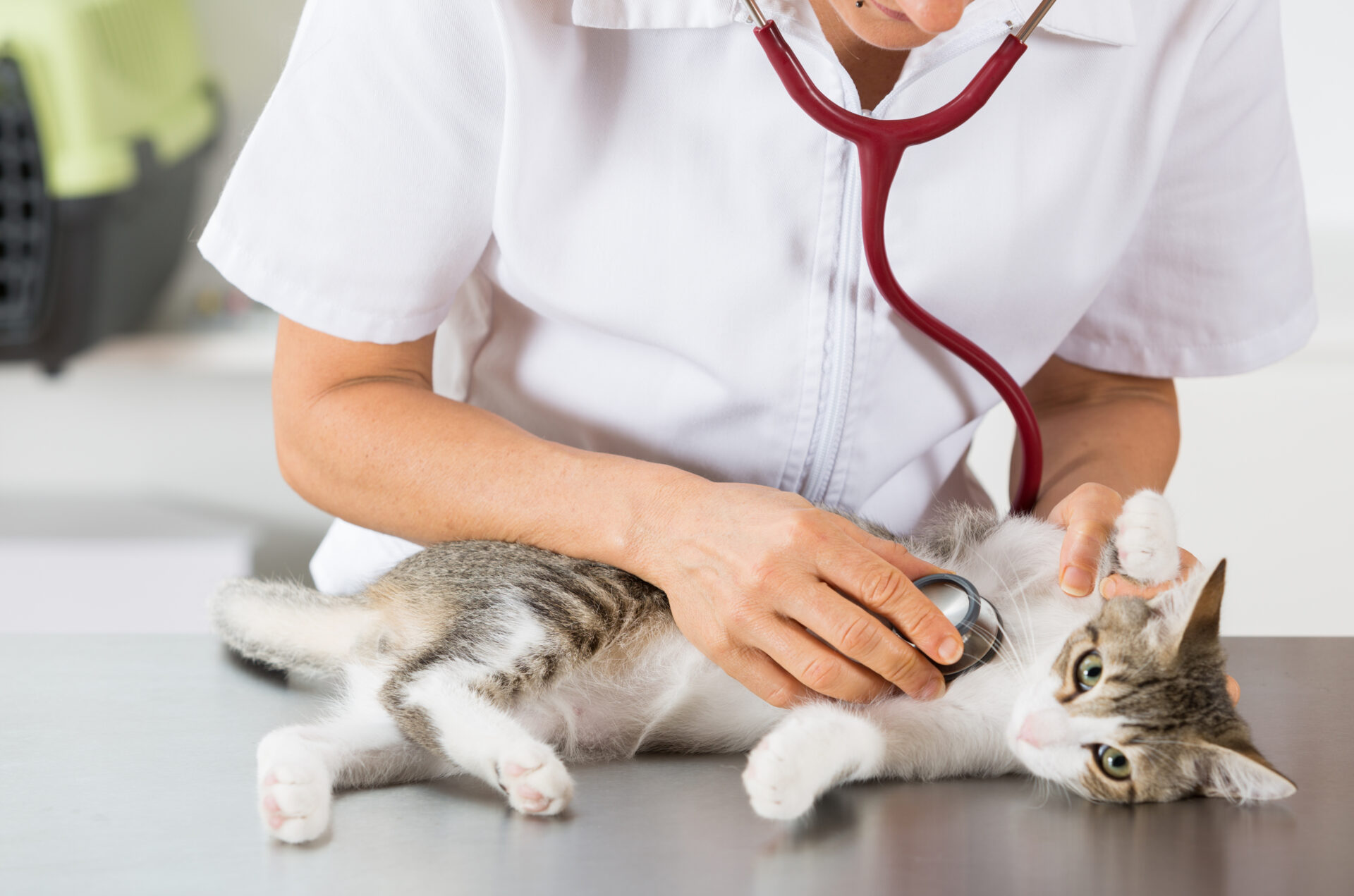What sensitises animals?

Like humans, pets can be allergic, and may even be allergic to humans. And, as with humans, allergies cause significant discomfort and distress in pets. It is interesting to note that the most information about allergies can be found in dogs, cats, and horses.
There are three main types of allergies that affect animals: food allergies, flea bite allergies, and allergies to various environmental allergens (e.g. house dust or pollen).
Food allergy in animals
Unwanted food reactions are estimated to affect less than 10% of all cats and dogs. Crucially, also like in humans, they can develop in an animal at any age. Similarly to humans, we can recognise both allergies and food intolerances, which is related to the mechanisms of these disorders. Allergy and food intolerance can have similar (or even identical) symptoms. Distinguishing between these two conditions requires specialised testing.
In the case of food sensitisation, cats are most commonly sensitised to beef, dairy, poultry or fish. Together, hypersensitivity to these allergens affects about 80% of all food sensitisation cases in cats. Dogs, on the other hand, are most frequently sensitised to beef, wheat proteins, lamb, soya, poultry, and chicken eggs. These foods together account for more than 90% of food allergy cases in dogs.
In general, the main food allergens responsible for the development of sensitisation in dogs and cats are considered to be: milk (50%), beef (48%), chicken eggs (48%), maize (33%), rice (32%), rabbit meat (30%), soy (28%), poultry (28%), and lamb (16%).
In dogs with food allergy, the dominant symptom is pruritus, which may or may not be accompanied by secondary skin lesions, the most common of which is purulent dermatitis. Secondary post-traumatic paw inflammation (known as hot spots) may also develop. Importantly, pruritus occurs year-round. Although both the pruritus and the lesions can be localised anywhere on the animal’s skin, the ears are most commonly (up to 80%) affected. Sometimes they occur only in the ear area (about 16% of cases). It is worth noting that sometimes the symptoms can be similar to those observed in flea allergy.
In cats, the symptoms of food allergy are also mainly pruritic, while the skin lesions are mainly located in the head and neck area. Milky and purulent lesions may also occur, often secondary to mechanical trauma resulting from the animal’s scratching.
What’s interesting is that, the food allergies in dogs and cats are difficult to treat. They respond poorly to both elimination diets and drug treatment.
Flea allergies

A major problem for animals are fleas. A flea bite exposes the animal to the saliva of this insect. In turn, their presence on the animal’s skin exposes it to constant contact with the excretions and secretions of these insects. In addition, the bites, by causing itching, provoke the animal to scratch, and this damages the skin mechanically. The damaged skin facilitates the penetration of allergens. All this can lead to flea allergic dermatitis. This is nothing more than hypersensitivity to saliva and other flea secretions and excretions (otherwise known as hypersensitivity to flea bites).
It is estimated that the saliva and faeces of these insects are a source of as many as 15 different proteins with a molecular weight of 25-28 kDa. Each of these proteins has the potential to be an allergen. At the same time, attention is drawn to the fact that some may be allergens common to different flea species. It is also characteristic that in cases of hypersensitivity to flea bites, the saliva of these insects causes irritation disproportionate to the actual number of fleas feeding on the animal. It has also been noted that constant exposure to fleas leads to partial tolerance (i.e. hypersensitivity wanes), while periodic flea infestation increases sensitisation.
What is interesting is that it has been observed that flea allergy does not run the same course in dogs and cats. In dogs, hypersensitivity to flea bites in the first six months of an animal’s life is very rare. Its frequency increases with the age of the animal and is particularly severe in dogs 3-5 years old. No such correlation is observed in cats. The immunological mechanism of the reaction in dogs and cats also appears to be different. It has been observed that in dogs, the reaction to fleas can be both immediate and delayed, while in cats it is always immediate. In both species, it has not been observed that the sex or breed of the animal predisposes in any way to the development of this hypersensitivity.
Allergy in animals to environmental allergens

Environmental allergies in animals can be caused by indoor allergens (e.g. house dust mites, moulds, fabric components, household chemicals, and allergens of other animals) and outdoor, commonly referred to as ‘backyard’ allergens (e.g. pollen, moulds, etc.).
Sensitisation to airborne allergens in animals often manifests itself as skin irritation, especially in the muzzle and nose area, and ear infections. Conjunctivitis of the eyes and nasal discharge, sneezing or wheezing are also possible. Some animals also develop asthma. In the case of sensitisation to seasonal or outdoor allergens, there is a clear link to the pollen season or the animal’s outdoor activity (e.g. after a walk). In contrast, the symptoms of dust sensitisation are increased at home. A good example of this is my cat, for which sniffing under the furniture always ends in sneezing, wheezing, and a general loss of good mood (the so-called waspiness).
Interestingly, dogs and cats also react differently in this case. In dogs, inhalant allergy usually appears when the dog is one to two years old. In cats, on the other hand, it can occur at any age. It is also estimated that asthma in cats is more common than in dogs. It is interesting to note that there are known descriptions of feline asthma dating back 90 years.
Special case – allergy to humans
In fact, it is a special case and not a special one at the same time. Sensitisation of an animal to proteins secreted by humans (human allergens) is biologically not unusual. Since humans can be allergic to animal allergens, animals can also be allergic to human allergens. Our proteins are foreign antigens to the animal immune system. It is therefore obvious that animals can become allergic to them. And what then? Anyone who has an animal will know that there is no simple answer to this question. We get attached to animals and they get attached to us. Give the pet away to someone else? This is not easy for either man or animal.
Allergy in animals – what is worth knowing?
Allergies in animals can be diagnosed and can be treated. Although various treatment strategies are described, you should certainly rely on a veterinary specialist here. In general, the best course of action is always to minimise your pet’s exposure to the allergen that sensitises it.
____________________
translation: Julia Majsiak









